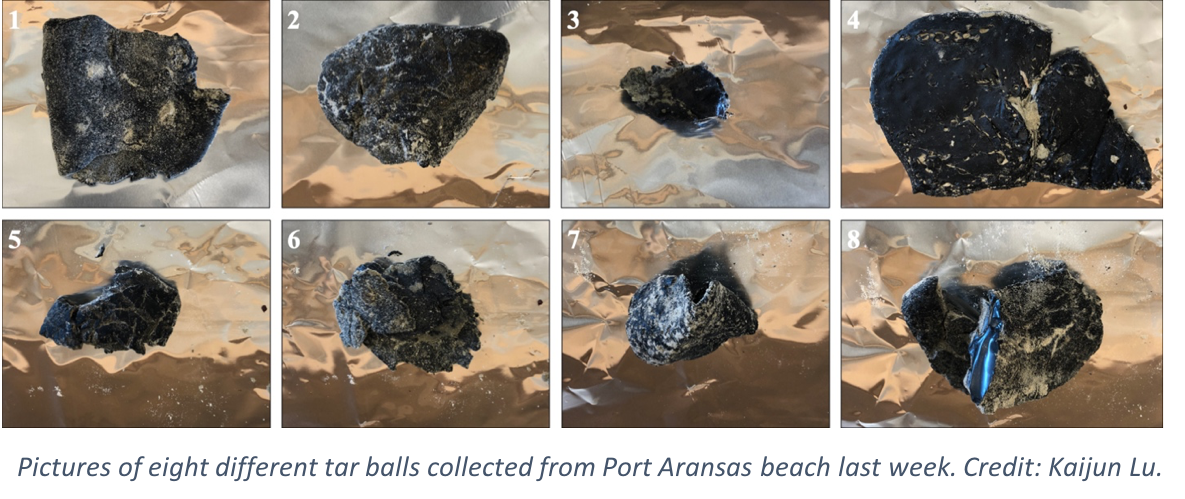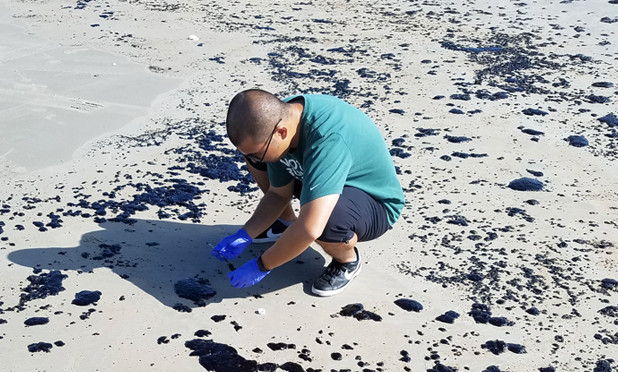Oil is no stranger to the Gulf of Mexico and recently beachgoers have come face to face with sometimes-sticky oil remnants or tar balls. Oil can be released in gulf waters from naturally occurring seeps, or through accidents associated with man-made drilling or oil transportation.
Last week, chemists at the University of Texas Marine Science Institute in Port Aransas, Texas collected oil tar balls that washed up on Port Aransas beaches to try to get a better understanding of where the oil is coming from. Being chemists, Drs. Zhanfei Liu and Kaijun Lu and Xiangtao Jiang employed chemistry to analyzed hopanes, a group of biomarkers that can “fingerprint” each tar ball, together with other hydrocarbons.
They found that the recent tar balls washing up are likely from three or four distinct sources. Some of the less weathered tar balls had a somewhat similar fingerprint, or collection of hopanes, to the oil from the Ixtoc 1 spill that occurred in the Bay of Campeche, Mexico in 1979. Ixtoc 1 was one of the largest oil spills on record and throughout the early 1980s, was the scourge of many a beach goer on the South Texas coast.
The chemists say that the less weathered tar balls have a chemical signature that is similar to Ixtoc 1, and could be from large globs of buried Ixtoc I oil recently released by dredging or indicate a new spill of oil from the same or similar oil reservoir as Ixtoc I. “We won’t know for sure if the oil is from buried tar mats from the Ixtoc 1 spill until we can compare our analyses with an original sample from Ixtoc I,” said Dr. Zhanfei Liu.










